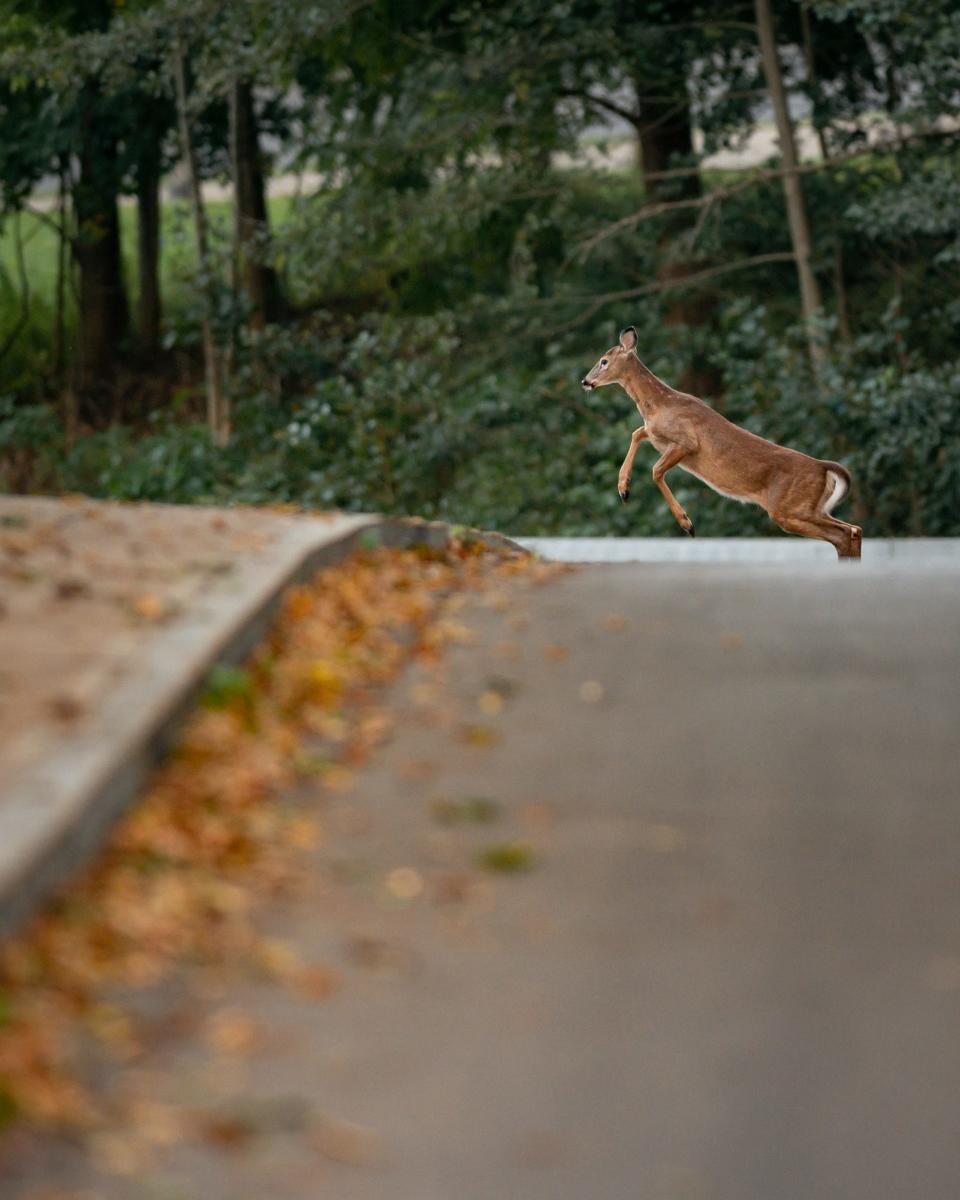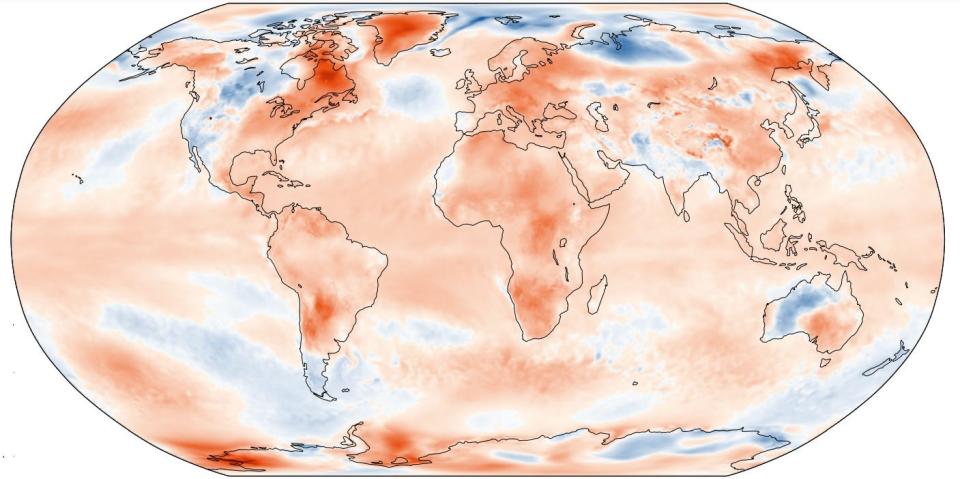Car crashes, Lyme: Deer cause havoc in NY, and population is exploding amid climate change
More than 70,000 New Yorkers suffer injuries or financial hardships after their vehicles hit deer on roads each year, with an average repair bill of $4,000.
Another 7,000 residents fall seriously ill each year with severe pain, headaches, and other debilitating symptoms of Lyme disease — caused by bites from parasitic ticks that feed on deer to survive.
New York farmers also estimated their deer-related crop damage losses to be about $59 million per year, state records show.
And these costs are expected to get worse as the warming climate allows more deer to thrive across large swaths of New York.

Creating a perfect deer habitat
Threats to humans from deer — which are primary hosts of adult ticks and crucial in spreading a range of illnesses — are already playing out in communities throughout New York, Cornell University Professor Bernd Blossey said.
“The deer come to us because what we have created is perfect deer habitat,” he said, referring to the gardens, farms, parks and other deer food sources built into many communities.
But deer overabundance, in many ways, stemmed from the first half of the 20th century. At the time, state environmental measures helped replenish deer populations after rampant deforestation and uncontrolled hunting wiped out 95% of the country's deer in the 19th century.
Yet tracking and managing supersized deer populations today remains extremely difficult, raising concerns that climate-driven spikes in deer could quickly spiral into traffic and public health nightmares.
Climate change: Elderly New Yorkers are dying in the summer heat. How will NY address rising temps?
What happens when deer and New Yorkers clash
Some local, state, and federal efforts to reduce deer numbers in New York underscored the dangerous clashes between societal development and nature.
In several upstate communities, government-sanctioned sharp shooters fan out at night, using rifles with noise suppressers and infrared scopes to pick off deer encroaching on neighborhoods.

On Staten Island, a deer sterilization program has reported gains in reducing deer numbers, despite some experts’ skepticism of deer population estimates.
Hundreds of thousands of deer also get killed each year by hunters, as state Department of Environmental Conservation biologists control permitting to limit the risk of deer overwhelming certain regions.
New data shows hottest summer on record 'Climate breakdown has begun': Globe swelters to hottest summer on record, new data shows
Where are the worst deer problems in NY?
Milder winters over the past decade have already altered deer migration patterns in the Northeast. Deer must no longer seek warmer areas to survive winter, fueling larger populations in parts of upstate and the Adirondacks.
Meanwhile, deer have also settled in some suburbs and cities where green spaces offer ample food and refuge from hunters. Dozens of communities from the Finger Lakes to the Hudson Valley were formally tagged for having an overabundance of deer in a 2021 state report.
In some locales, state and local measures limiting or prohibiting hunting contributed to the overpopulation of deer, said Brendan Quirion, a big-game biologist with the DEC.
The hunting region that includes Westchester County, for example, only allows bow-hunting under a decades-old state law, which state environmental agents have urged lawmakers to repeal amid rising deer threats.
Millions of tons of garbage: Environmental group, businesses sue to block expansion of Seneca Meadows landfill
Other parts of the state have struggled with declining interest in hunting, in general. And many of those who do hunt prefer to kill bucks, or males, for the antler trophy, despite the fact culling antlerless doe, or females, is better for managing population.
“If we continue to see mild winters,” Quirion said, “we’re going to have to evaluate other management tools and strategies.” That could include, he added, conducting more outreach and permitting that targets the diverse mix of hunting problems statewide.
How deer populations are tracked in NY
Further, researchers are constantly seeking new ways to estimate deer populations. They’ve tried counting deer using flyovers and cameras stationed in forests. Some have even looked into calculating deer numbers by tracking their droppings.
But all the existing efforts have huge margins for error, including the most commonly cited estimates based on deer hunting reports.
“The assumption is that deer numbers have increased, but nobody can be sure about that,” said Blossey, who is chair of the Cornell deer management committee.
Recycling in NY: They gather up cans and bottles on NY streets for recycling. And they could use a raise
Still, deer harvest data in New York offers some useful insights into trends, despite the fact statistics are impacted by the number and effectiveness of hunters each season, according to analysis by the USA TODAY Network.
Among the findings:
Hunters killed an estimated 231,961 deer during the 2022 hunting seasons, a 10% increase from the prior year.
From 2000 to 2010, the annual average deer harvest totaled about 237,000, up about 8% from the 1990s.
The 2000 to 2010 average was up about 35% from 175,000 deer killed per year in the 1980s.
Deer harvest totals in recent years have seen a drastic spike from the 1950s when tracking of the kills began and averaged about 57,000 per year.
Will climate change ignite deer population explosion?
While biologists expect deer to thrive in the Northeast thanks to warming climate, a range of factors could prevent populations from reaching cataclysmic levels.
A variety of illnesses impact deer populations, including chronic wasting disease that has been infecting anywhere from 10% to 25% of deer in 29 states, killing hundreds of thousands of deer, federal records show.

Another deer management battlefront could increasingly involve curbing deer access to food supplies on farms and in suburbs and cities.
“If we are not doing anything, deer will eat themselves out of house and home and that will limit deer populations,” Blossey said. “However, one thing we are doing is growing crops and gardens, and large deer populations in suburban and urban areas are subsidized by us."
This article originally appeared on Rockland/Westchester Journal News: Deer cause havoc in NY, and numbers are exploding amid climate change

